In a companion article to this “3D Printed RPG Accessories: Enhance Your Gaming Experience” I wrote about how you could enhance your RPG gaming experience by using 3D printed items. Have a look at that article if you haven’t already and you’ll hopefully pick up some tips and ideas.
RPGs are a quite specific genre of board game and require specific pieces which you may not find in other games. For instance, multi sided dice are a prime example. However, most boardgames in general have a lot in common in the things you need to play them if not the gameplay style.
Essentially with a board game your goal is to get from one starting point on the board to another via a series of random spaces in between. This isn’t necessarily an A to B race such as in Chutes/Snakes and Ladders but could be a strategic game like Chess or Risk where landing on squares or spaces isn’t a linear journey.
Games such as these require simple playing pieces to be able to actually play them but could be enhanced to make the appearance of the game more aesthetically pleasing or indeed easier to handle.
Probably the best example of this is Chess which has the same basic board and playing pieces but these can be made to look like anything you want. This is particularly beneficial if you want to create a set based on a certain theme, book or TV show/movie. The possibilities are infinite.
In this article I’m going to look again at some of the things you can 3D print to revolutionize and enhance your game night but also visit some new ideas relating to games playing in general. Let’s then roll a six to start and see what happens.
Game Boards
Game boards tend to be of a limited size and specific to the game you’re playing. This again isn’t the case with Chess or Checkers but we’ll park that for now and look at some different gaming surfaces.
It is of course possible to 3D print a board for your game but you’ll more than likely need to print it in sections. This will mostly be down to the general build volume of standard home 3D printers but this doesn’t have to be a disadvantage. Being able to print in sections allows you to fine tune the top surface of the board and add as much or as little details as you want. Also, if it is an RPG or similar type of game, you can then expand the board as much as you want and even add or remove certain sections to create different gameplay scenarios.
The key thing when printing a game board is to make sure its flat (if of course you need it to be) which can present problems while printing. As I suggested in my previous article, you’re better served by printing board pieces using an FDM printer but you’ll need to ensure its enclosed or at least free from draughts or temperature changes to avoid it becoming warped.

I know I said I’d park chess boards for a while but on second thoughts, please allow a bit of self-indulgence while I show you a project I did a while ago. I decided I wanted to 3D print a Star Wars Chess set so started with the board. Scale was a thing here as the pieces I wanted to print were fairly big in chess piece terms so the board squares need to accommodate these. I therefore used an Ikea Lack side table as my base and printed 64 individual squares measuring 60x60x5mm and printed 32 red and 32 white, 16 red and 16 black. These fitted perfectly together once glued to the table but to finish it off, I created border tiles which indicated the Dark Side and Light Side of the Force. I’m pretty pleased with how it came out and the picture below shows the end result.
In terms of design, my chess board was fairly simple but you can go as simple or as detailed as you want. This could just be to add printed numbers to the spaces, adding specific detail like traps or bonuses or even printed writing to indicate what landing on that does or means. As I say, the choice is yours but will be driven by either the rules of an established game or how you may want to create your own unique game.
Playing Pieces
I’ve spoken before about playing pieces in RPG scenarios which will tend to be character based and maybe unique to the game or even to the player. In RPGs, its common for a player to play as a specific character every time they play so they may want to have a 3D printed version of that character as their playing piece. This brings a uniqueness to the game and allows players to express their individual designs for their character.
If of course you’re playing a more standard board game then the playing pieces may be a little less complex. You may also need a few of them such as in the case of games like Risk where your armies are represented by simple colored tokens. These are obviously possible to 3D print and due to the simplicity of the pieces, can be printed in large numbers in a single print run.
Dice
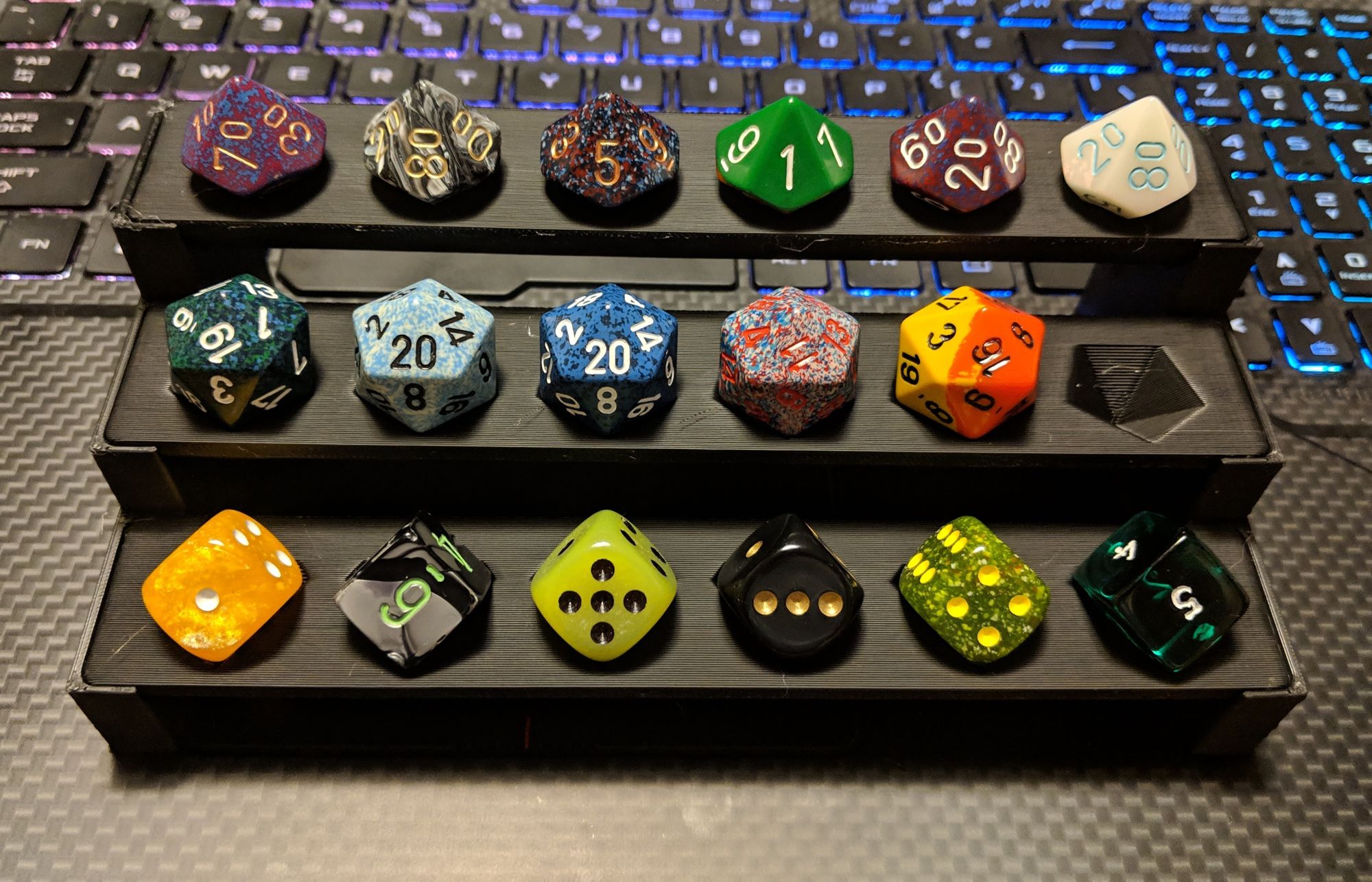
Dice aren’t necessarily used in every board game you find but probably in the high 90s percentage wise.
As we’ve seen with RPG dice, these can have many mores sides or faces than the more standard 6-sided cube but again , this will depend on the type of game that you’re playing. Games like Monopoly or the aforementioned Chutes/Snakes and Ladders use standard dice which are pretty easy to print.
However, just because they don’t have 20+ sides like an RPG dice might have, it doesn’t mean they have to be boring. You can design your dice to be printed in any colour and even a combination of colors. It could also be possible to add lights inside your dice if you have the wherewithal to do so and the dice are big enough.
Dice Tower
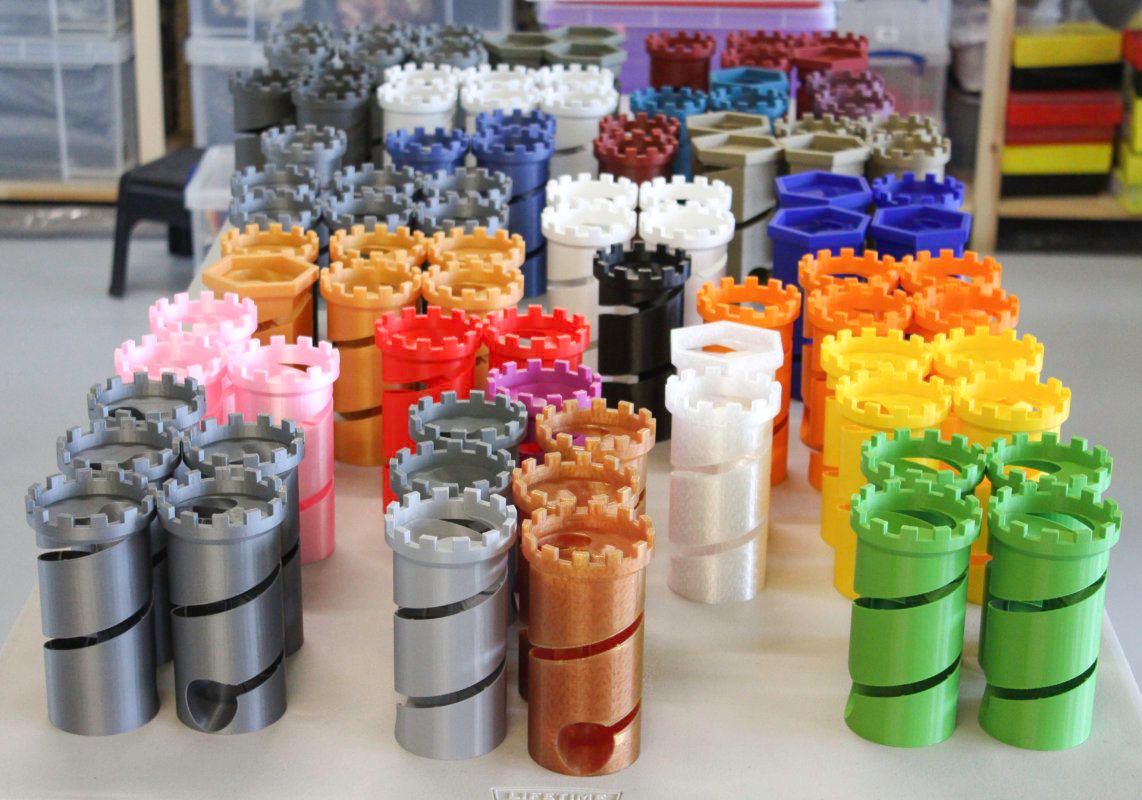
I’ve also covered these previously in respect of RPGs but there’s nothing to say that you can’t employ a dice tower for any type of dice-based game.
With RPGs, you’re probably going to try and design something that fits with the theme of the game and may even fit into the gameboard itself. However, dice towers can be mobile so why not 3D print something that is both functional and adds a degree of fairness to each dice roil.
The idea of a dice tower is that it makes each roll the same by having the player drop the dice into the top of the tower and letting it emerge at the bottom. The rolling process could just be performed by gravity but you can also add tumblers or barriers through which the dice have to pass. This then eliminates the human input that could be used to unfairly manipulate the dice roll.
For non-RPGs, you could just have a simple geometric outer design or create a generic design that could be used across many different game genres. You could though specifically design a dice tower to fit with a particular game so for Monopoly you could have Mr. Moneybags as your design with the dice being dropped into his top hat and then emerging from either foot.
Dice Cups
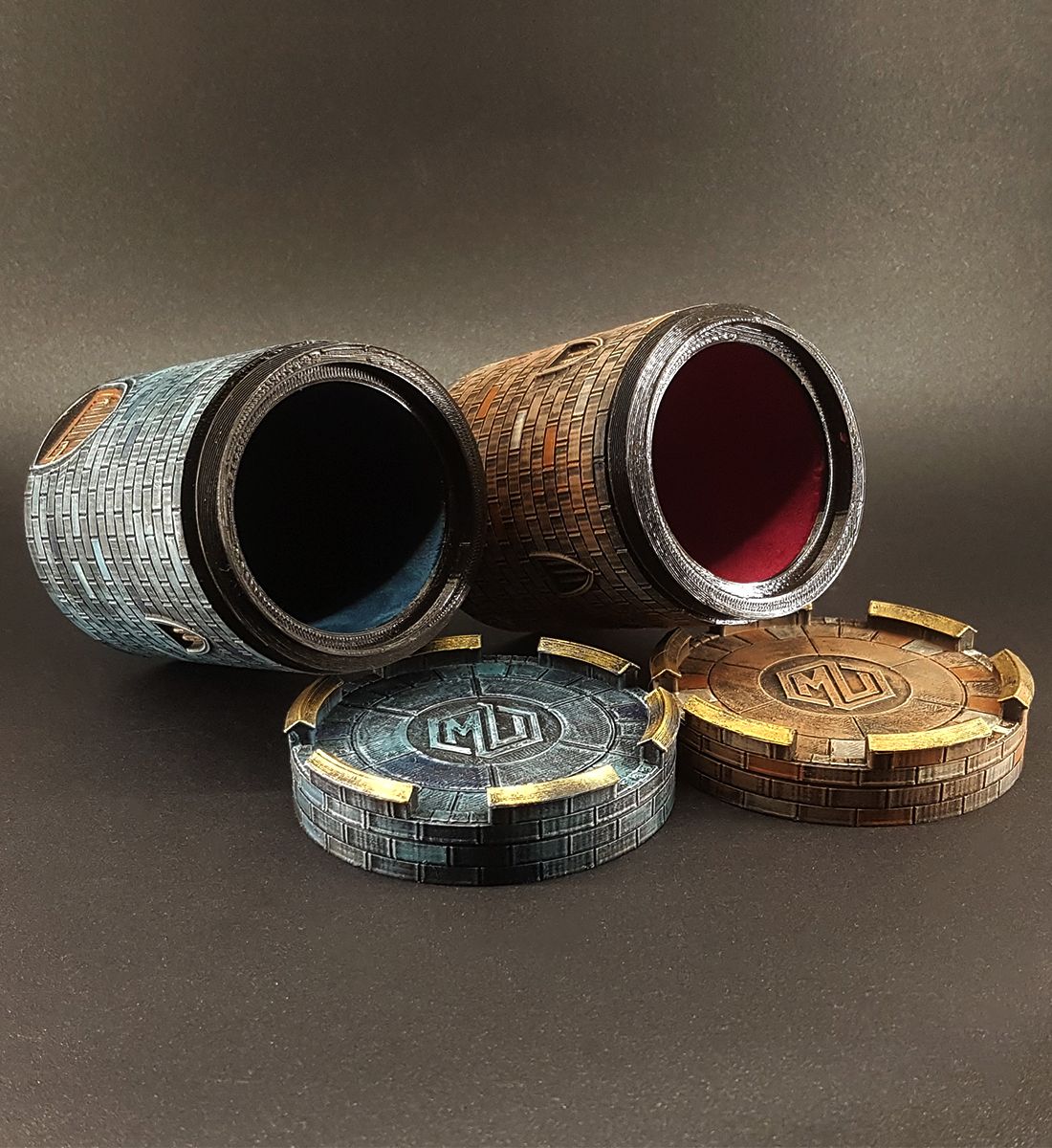
Again, obviously, this is a tool for rolling the dice which takes a bit of the human manipulation out of the roll itself. Its maybe not as infallible as a dice tower but still serves the same purpose. Using a dice cup is also a good way to move play on quickly and pass the dice onto the next player.
Dice cups could of course be any design you wish and they are pretty easy to 3D print if you use the right settings. You could even add that extra touch to your game night by making personalized cups for all of your players. Just be sure that they don’t try to drink from them as this could get messy!
Dice Board
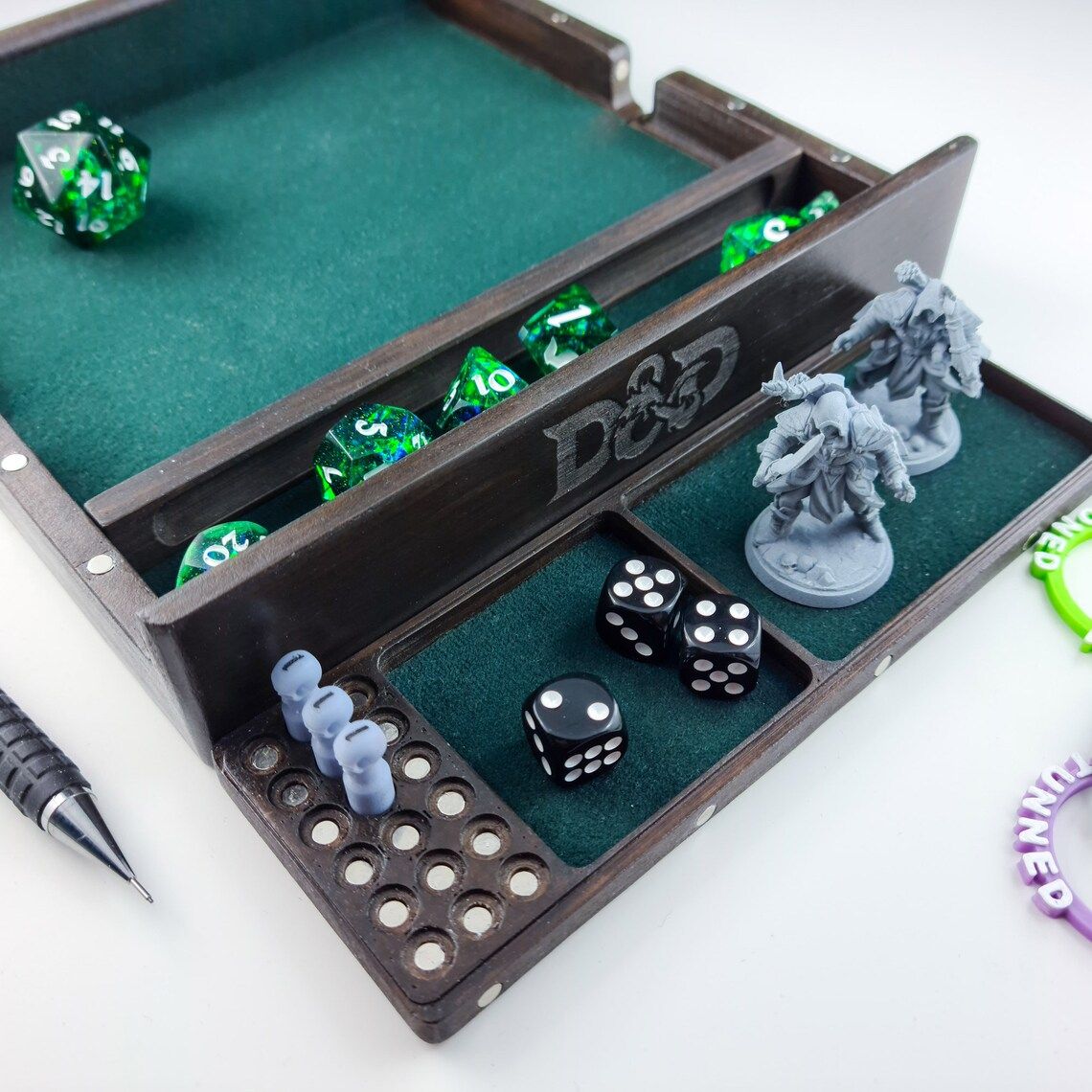
In certain gameplay scenarios it may be handy to have a separate board or dice rolling tray to keep the rolling in a confined area. In RPGs for instance, you could have one character battle against another on the roll of dice so these two game pieces could be taken out of the gaming arena to pit war against each other. Dice can then be rolled, any damage calculated, and damage rings attached if necessary before returning the pieces to the main theatre of play.
Game Storage
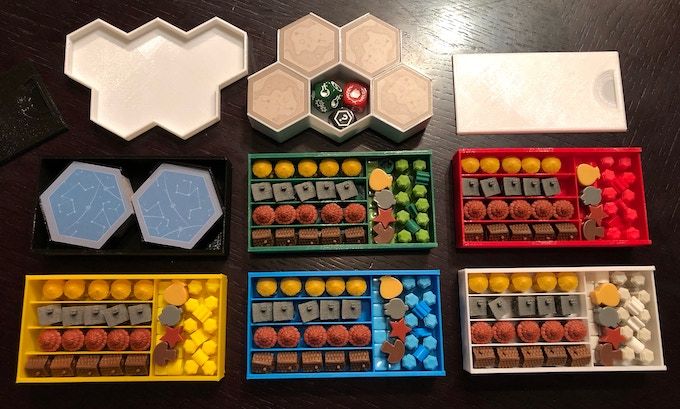
If you buy a game from a store then it will undoubtedly come in a box. These are great if they’re well looked after but after a period of regular use, the cardboard may fade and tear and any inserts in the box can also become worn and damaged.
It may then be time to create and 3D print your own storage for the board and playing pieces. This could easily be a direct replica of the original box or you could be creative and design your own storage case.
Boxed games tend to come with the playing pieces in a compartmentalized plastic tray and the folded gameboard sitting on top, almost as an extra cove. This is great and has worked well for decades. However, you could design a case that has drawers to it for the playing pieces or maybe a crate like affair that has stackable trays that you can lift out. Either of these would look great and impress your playing companions but would also protect your playing pieces and other equipment.
The only downside to this is the board itself as this tends to be the biggest part of the game and usually determines the size of the box in store bought games. With a 3D printed gameboard however, as I’ve mentioned earlier, you can print these in sections which will then make them more compact when taken apart. These could then have their own tray or drawer which would be the same size as the rest of the box.
Another idea could be to print the gameboard in such a way as it folds up into a box after gameplay. If done correctly, the base of the box would be the centre of the board and the sides could then fold out to make a cross shape. The four corners you’d then need to make a rectangular board could be the lid and then three further pieces inside the box. Not something I’ve seen done yet but its an idea that came to me and I thought had merit.
Game Storage During Gameplay
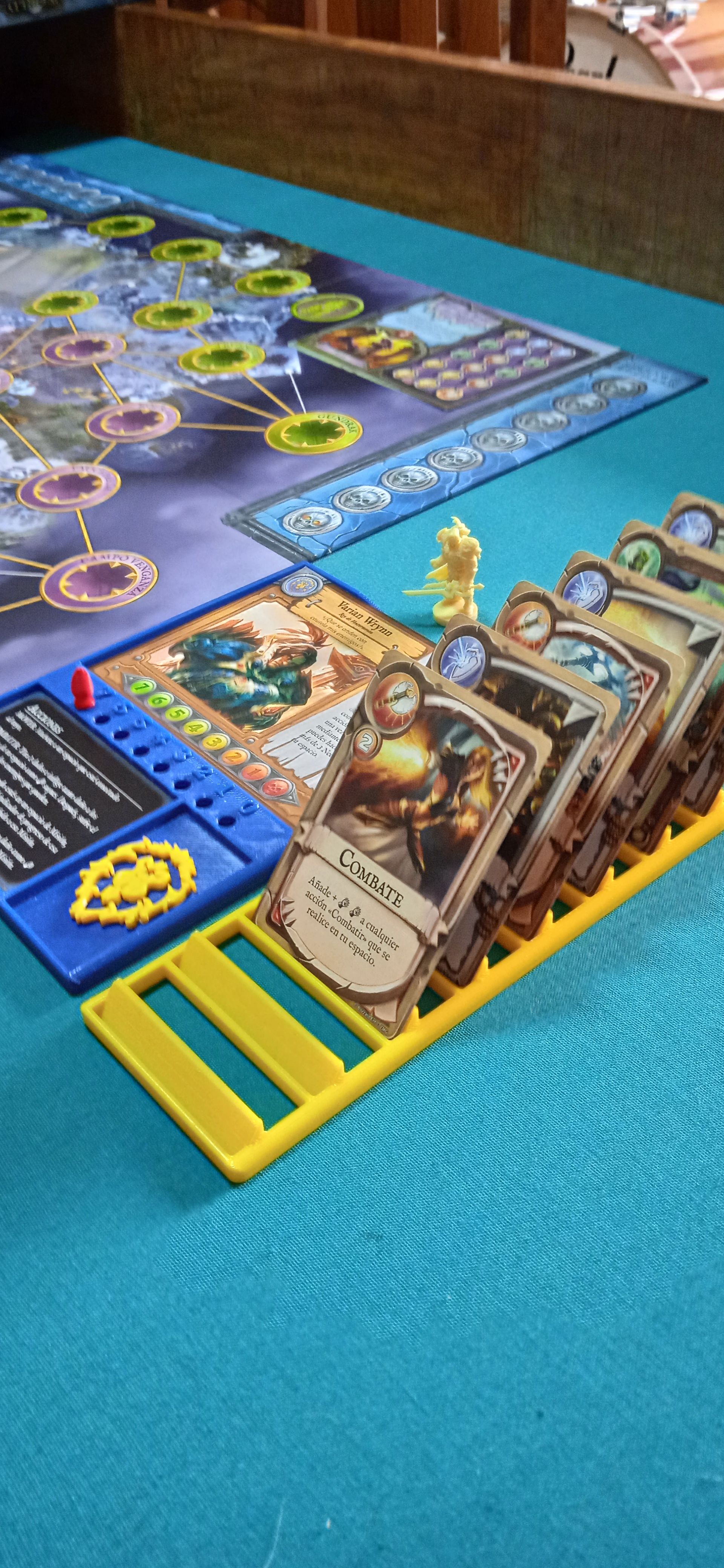
Apart from having a box or case to store your game in between playing session, you could also create tools and smaller storage items in which to place your game pieces.
The game pieces to which I’m referring aren’t your character piece, but you may during gameplay collect cards, cash or tokens which can be saved for later use in the game. You could of course just have these on the table in front of you but things can go missing and also get in the way. It may then be worth considering 3D printing a compartmentalized tray for keeping these items safe until you need to use them.
You can also keep dice that are used only for specific parts of the game in display holders or cases. Bringing a dice out that might determine whether player ends their game or continues might carry more gravitas if it appears from its own special case.
To use Risk as an example again, some versions of the game come with the playing pieces in extra boxes that can be placed on the table. Others like Monopoly can have trays in which to place your money and property cards and allows you to separate these out so you can see what you’ve got.
Both of these types of items are things that could be 3D printed if you wanted. You could of course personalize these in the same way as the dice cups if you wish.
This type of gameplay storage is also sometimes referred to as “player dashboards” so search for printable files online using those words and it should come up trumps.
Other Game Night Accessories
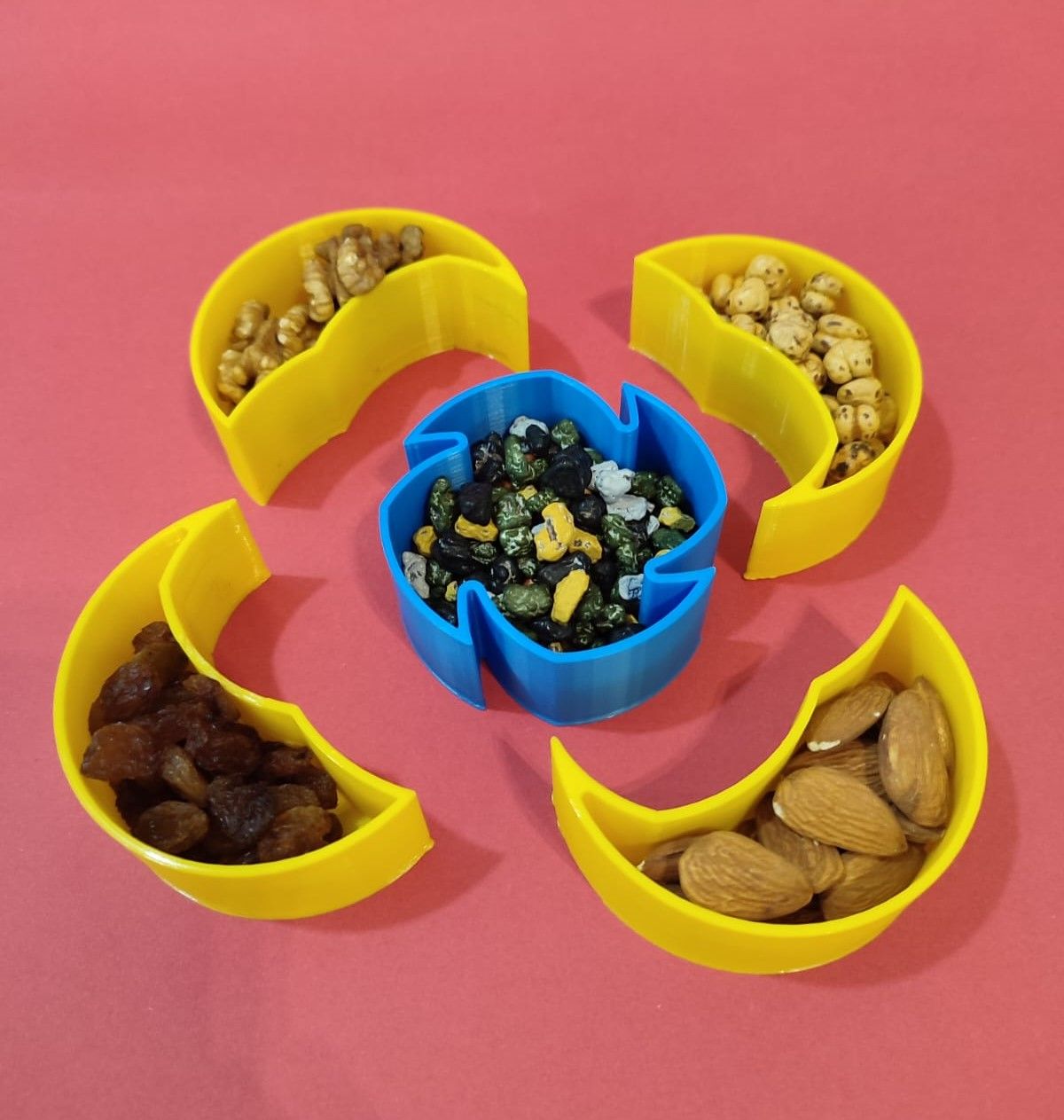
There are any number of things that you can add to your game night experience that doesn’t necessarily or specifically relate to the gaming itself. All of these are of course possible to print in 3D. However, as a cautionary note, not all 3D printing materials are considered “food safe” so check what the guidelines are before you print anything that is to be in contact with food and drink.
On that note as well, and this is more to do with safety and mess, PLA filament isn’t designed to hold water so its not advisable to make cups or bowls for dip etc. where liquids may be involved.
The kind of items I’m referring to could be, but not limited to, any of the following:
· Drinks cups
· Snack bowls
· Dip bowls
· Coasters
· Cup holders
All of the above could again be themed around the particular game you’re playing or personalized for each individual or team.
Trophies
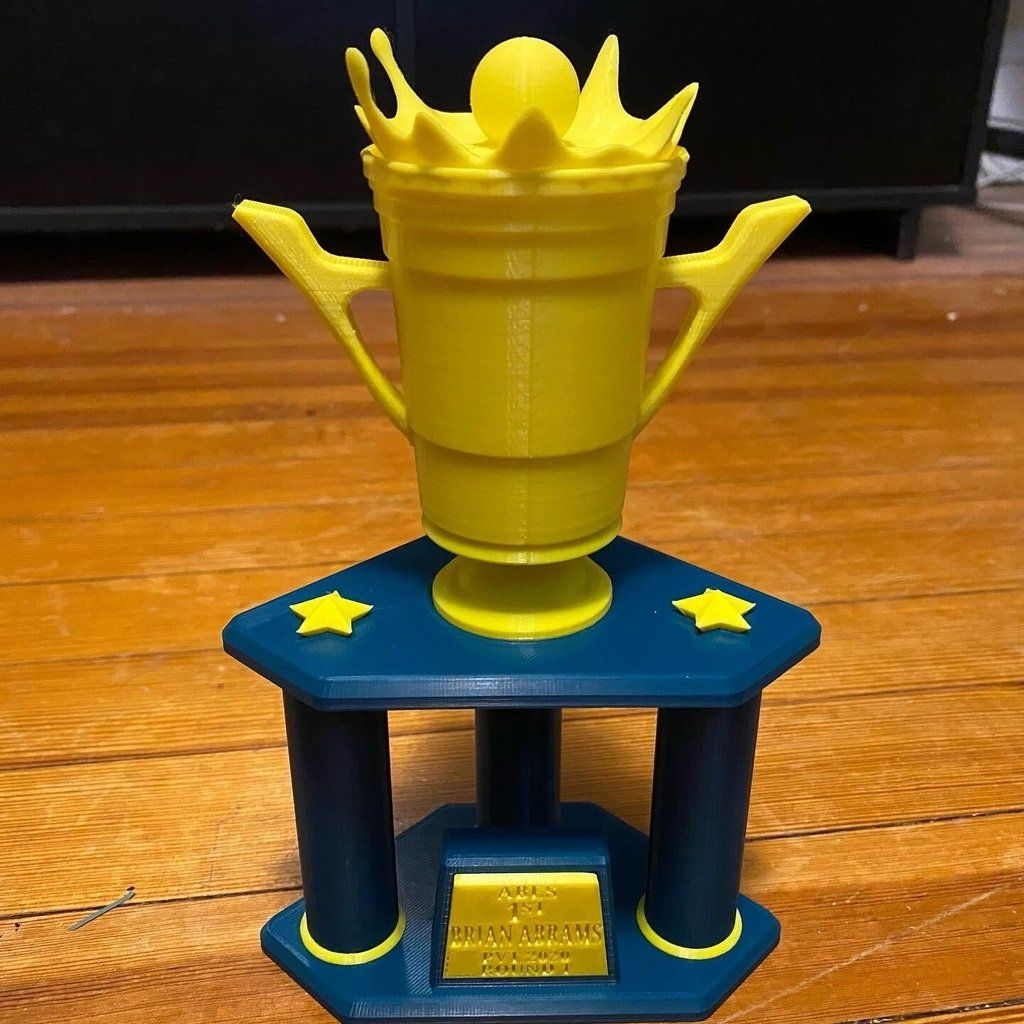
As a final flourish, at the end of any game night there surely has to be a winner so why not honour their achievement by presenting them with a 3D printed trophy.
This could be themed around the game itself so in the case of RPGs, gameplay often involves a quest to find a mythical relic or treasure. You could therefore print a 3D model of this as the winner’s trophy and really end the game with style.
Doing something like that may mean that you need to allow the winning player to keep the trophy as its unlikely that you’ll search for that same treasure again with that group of friends. An alternative then would be to 3D print a perpetual trophy that is played for every week and goes to the winning player or individual. As long as they return the for the following game night to defend their crown, the trophy is up for grabs.
By the way, I know the trophy in the image is for winning a beer pong tournament so forgive me for that but I’m sure you can produce a better and more appropriate design for your trophy.
Whatever you choose to do and how you use your 3D printing and design skills, hopefully you’ll find something that will enhance your game night and want your players coming back for more.


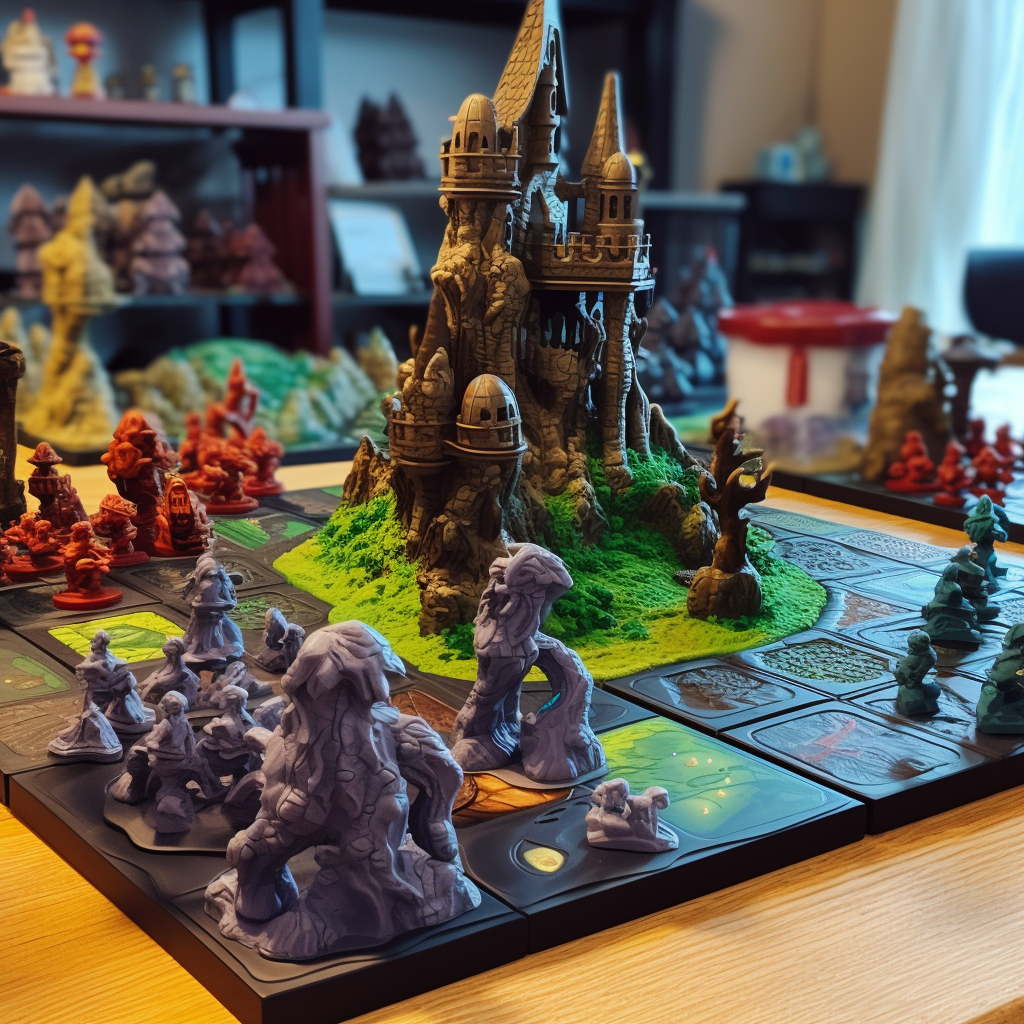





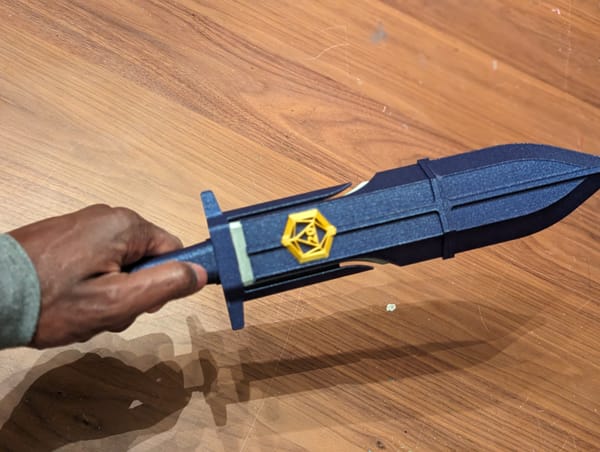
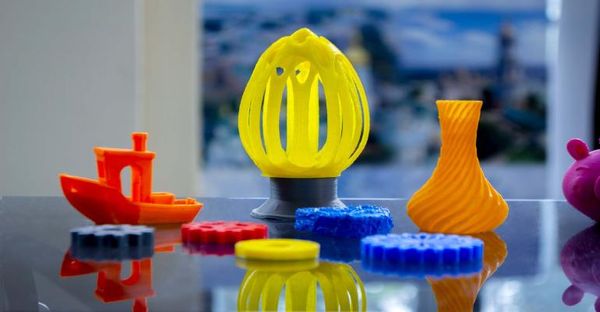
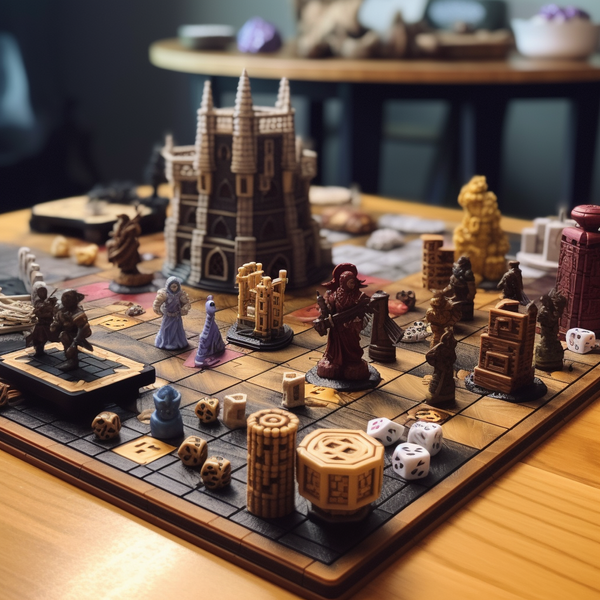
Member discussion